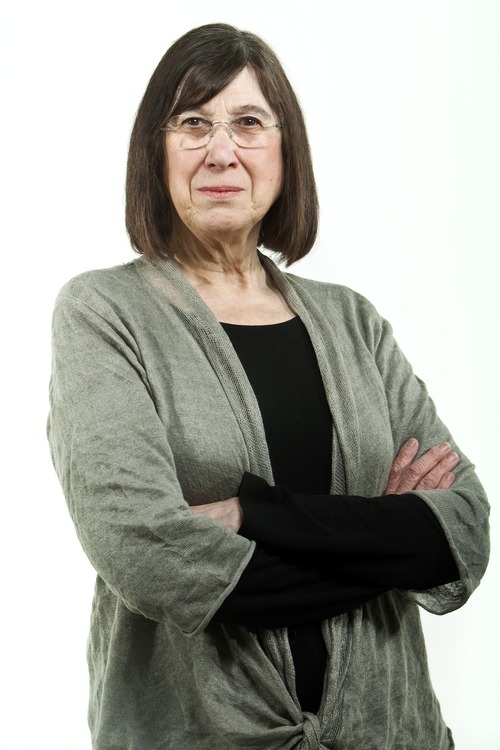This is an archived article that was published on sltrib.com in 2013, and information in the article may be outdated. It is provided only for personal research purposes and may not be reprinted.
Last week, while backing the car out of the garage onto our narrow driveway, I saw my husband square his shoulders and give me that look. It reminded me of June 9, 1909, when 22-year-old Alice Ramsey, her husband's two "conservative" sisters and an eager teenager showed up at the Maxwell-Briscoe Motor Company on Broadway in New York City.
Their goal was to complete an all-female, cross-country road trip from Broadway to San Francisco within two months — traveling 3,800 miles northwest through towns like Buffalo, N.Y.; Chicago; Sioux City, Iowa; Cheyenne, Wyo.; Salt Lake City; and Reno, Nev.
At the time, most automobiles were costly and driven by men. Social critics believed women were too nervous to handle gas-driven vehicles and physically unable to turn a crank or make a quick decision. Moreover, female independence on the road could lead to trouble in the home.
The aim of Maxwell-Briscoe (and the automotive industry) was to promote horsepower rather than horse-drawn, employ more workers, produce more cars, lower prices and attract an all-gender middle class by proving "ordinary" woman were capable drivers.
Alice's country lawyer husband, John Rathbone Ramsey, loved the idea.
With Alice as the sole driver — her journey chronicled by pilot cars — reality advertising took to the road in a dark-green, four-cylinder, 30-horsepower, 1909 Maxwell DA touring car.
The $1,500 vehicle was equipped with bench seats, spare tires, tools, block and tackle, luggage rack, carbide gas driving lamps, side curtains, celluloid windshield, a detachable and durable Pantasote roof, an imitation leather material, and a series of state directions.
At the onset, there was a downpour. The women wore rubber ponchos and clutched wet bouquets of pink carnations. Forswearing the need to tote guns or pillows, they posed for a crowd of spectators, photographers and newsmen. Eager to depart, Alice kissed her husband and started the car.
"Cranking the engine was always part of the motoring adventure," Alice wrote in Veil, Duster and Tire Iron. "It was a clash with an unpredictable temperament; a gamble with a possible broken arm."
The young wife navigated slick roads until she reached Buffalo's dry climate. The foursome dined at the Park Club. They toured Niagara Falls. Near Ashtabula, Ohio, they followed directions to turn left at a large yellow house that actually had been repainted green by a farmer with an anti-automobile attitude. Nonetheless, they reached Chicago, where the weary women traded their dusters for ankle-length city clothes, treated themselves to a novel "dry" shampoo and rested.
It was tense crossing the narrow wood-planked bridge strung high above the roiling Mississippi River. Sioux City roads were pocked with holes. Poor road conditions, breakdowns and long repairs stunted their travels to Vail, Iowa. When Maxwell's right rear axle broke outside Grand Island, Neb., a replacement had to be freighted in from Denver.
Throughout miles of mishaps involving washouts, swamps, dry gulches, deep ditches, steep banks, arroyos, potholes and unmapped terrain, Alice stayed the course. She forded a stream, traversed over private land and drove her companions safely into Cheyenne for a fine stay at the Inter-Ocean Hotel — followed by bedbugs in Opal.
Outside Utah, Alice met former Salt Lake City Mayor Ezra Thompson and his son motoring in their new Pierce-Arrow. She followed them through the scenic wonders of Weber Canyon into Salt Lake. After hearing the Tabernacle Choir and floating on the Great Salt Lake, the women plotted the desert stretch to Reno, beginning with a picnic in Grantsville.
Somewhere on a "squirmy trail," the Maxwell smacked into several prairie dog holes. Alice wrote the "front wheels were spread apart" and the "spring seat had broken away from the axle."
Under pilot crew tutelage, she wired together the pieces and motored slowly to Orr's Ranch in Skull Valley to await repairs.
Then the ordinary woman turned the crank and took the wheel. She ate dry cereal in Fish Springs and with verve endured every calamity. On Aug. 7, Alice, her companions and Maxwell arrived in San Francisco ready to return home.
Eileen Hallet Stone, an oral historian, made be reached at ehswriter@aol.com. Sources: Gregory M. Franzwa's Alice's Drive: Republishing Veil, Duster, and Tire Iron.



